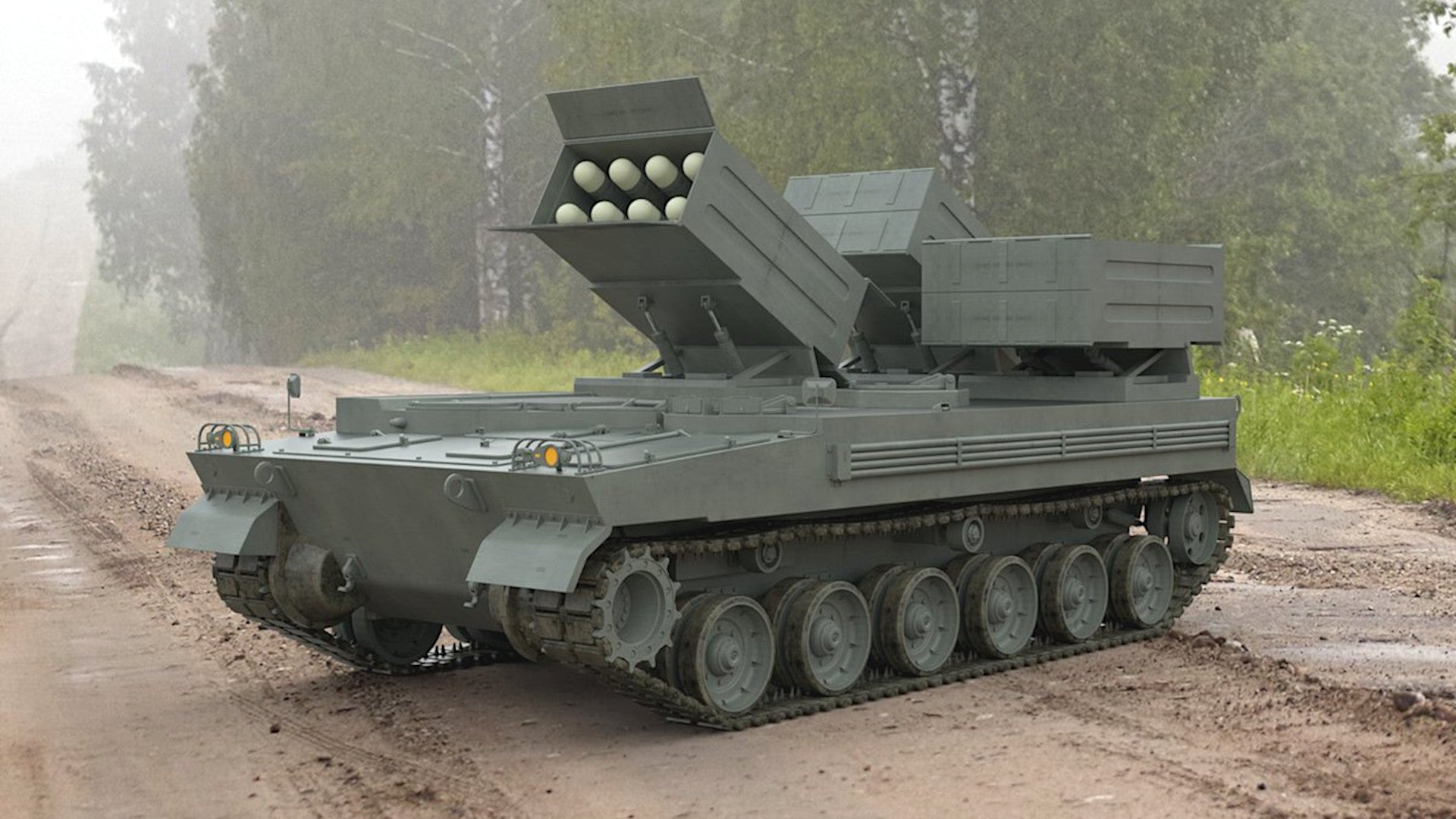European missile consortium MBDA and Polish defense conglomerate PGZ have signed a deal to work together on a proposal for Poland’s tank destroyer competition. The two firms are working on a number of concept designs that combine tracked vehicle chassis from PGZ’s subsidiaries with MBDA’s Brimstone guided missile, some of which could be attractive to customers on the export market.
MBDA’s subsidiary in the United Kingdom signed the cooperation deal with PGZ at a ceremony at the MSPO International Defense Industry Exhibition in Poland on Sept. 4, 2019. The trade show runs through Sept. 6. The two companies have been increasingly working together on a number of defense projects since 2017. This has now expanded into competing in Poland’s new tank destroyer project, which is broadly seeking replacements for vehicle-mounted examples of the Soviet-era 9M14 Malyutka anti-tank guided missile, also known as the AT-3 Sagger, including the 9P133 4×4 wheeled anti-tank vehicle.
“Pairing the combat-proven MBDA Brimstone missile with the diverse range of current and future Polish platforms provides the ability to deliver rapid military capability for Poland and for wider markets, whilst strengthening our co-operation with PGZ Group on missiles,” Adrian Monks, MBDA U.K. Sales Director in Poland, said in a statement.
“We can integrate on all Polish vehicle types quickly and without any significant technical complexity,” Monks separately told Shepard in an interview at MPSO.
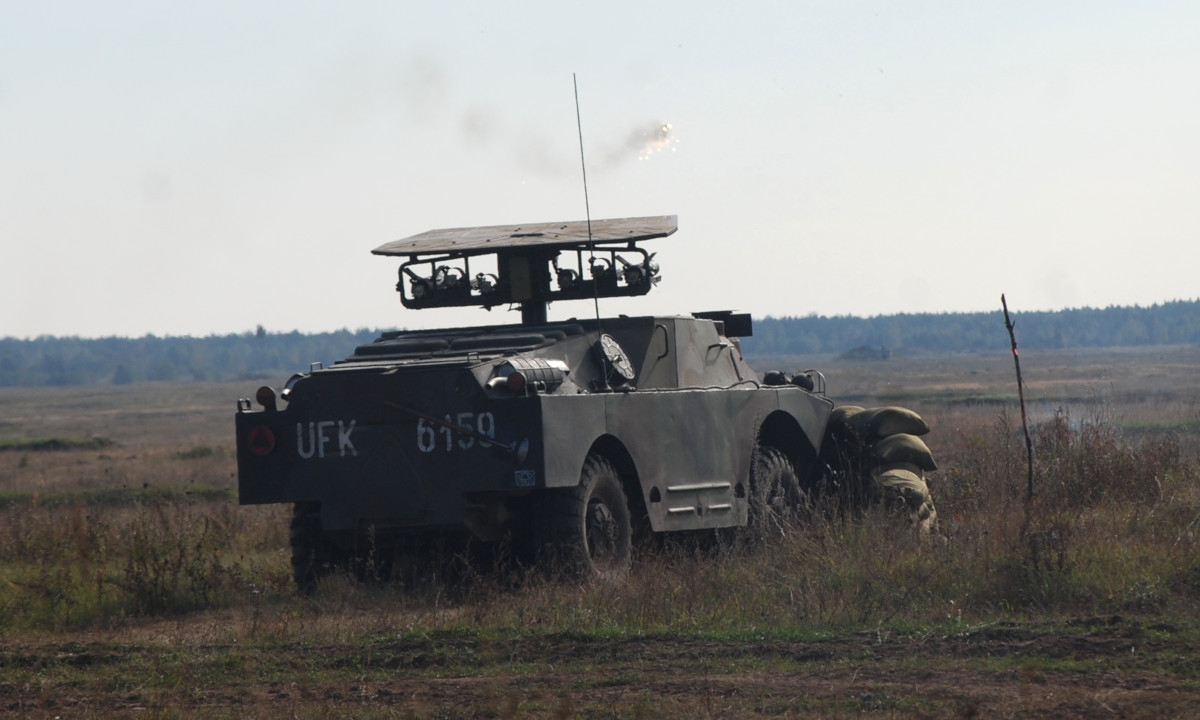
The Polish tank destroyer effort does not specify that any competitors must use a particular chassis, wheeled or tracked, in its submission. The biggest requirement is for a system that can “counter massed armor formations,” almost certainly driven by growing security concerns in Poland in recent years about potential Russian aggression.
Poland shares a border with Russia’s highly militarized Kaliningrad region. It is also a NATO member and would be among the nearest to potentially respond to any crisis in the Alliance’s Baltic State members of Estonia, Latvia, and Lithuania. Studies have repeatedly warned about how quickly a large conventional force would be able to occupy those three small countries during a major conflict. Similar concerns have driven significant reinvestment in various ground combat capabilities, including tanks, other armored vehicles, and anti-tank weaponry, among various NATO members, especially the United States, in recent years.
With this in mind, MBDA and PGZ have already shown a number of vehicle designs based on the chassis from the AHS Krab 155mm self-propelled howitzer, as well as the venerable BWP-1 infantry fighting vehicle (IFV), the Polish produced version of the Soviet BMP-1. The Krab concept, seen in the picture at the top of this article, along with one of the BWP-1 proposals, simply attaches large box launchers to the top of the chassis. The Krab-based vehicle has three eight-round launchers, while the BWP-1 one has a single 12-round launcher.
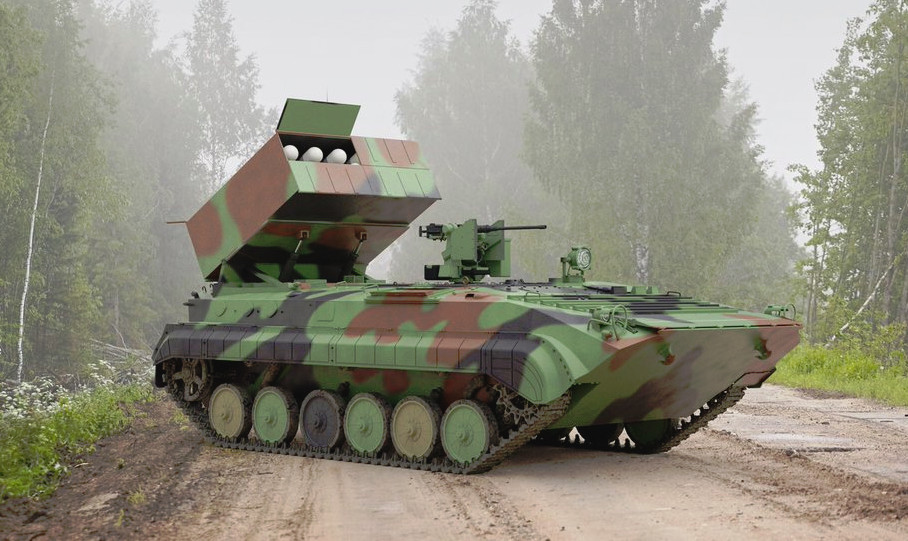
It’s not clear if these launchers are derived from an earlier palletized design that MBDA had pitched to Poland last year, which also offered a relatively simple way to add Brimstone to a variety of ground platforms. The European missile conglomerate has also proposed similar modular launchers in order to integrate Brimstone with the German Boxer wheeled armored vehicle for the British Army.
Another, more complex BWP-1 proposal involves modifying the entire rear section of the BWP-1, which troops would ride in the standard configuration, to accommodate a tilting 12-round launcher that folds down flush with the vehicle’s deck when not in use. This could help make it difficult for the enemy to identify tank destroyers from standard IFVs.
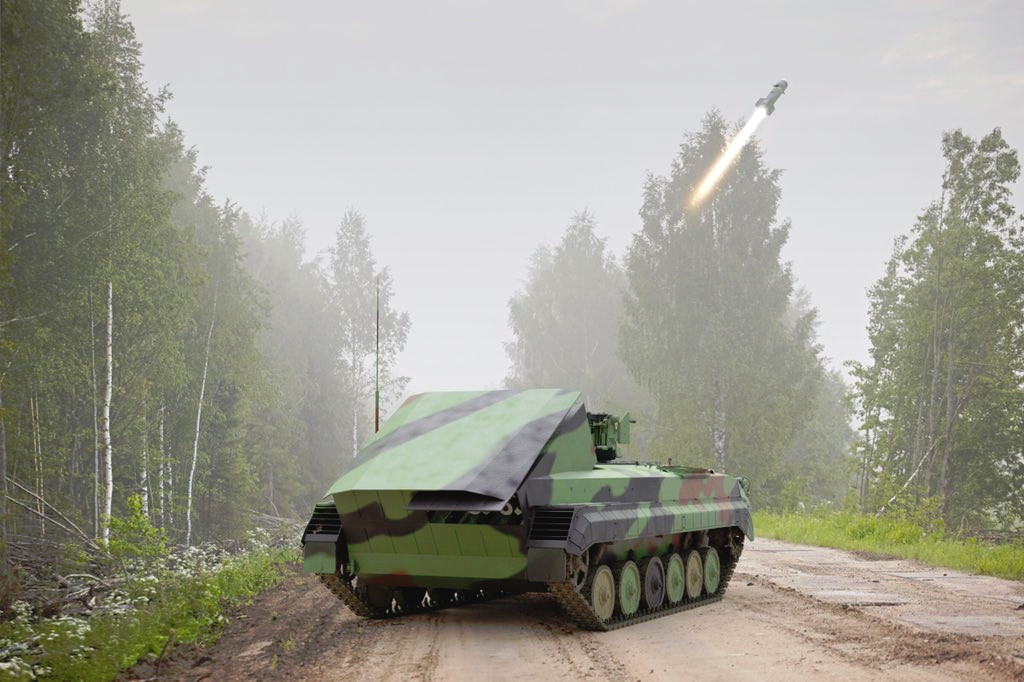
Brimstone would make any of these configurations formidable given the missile’s own capabilities. Similar in general appearance to the American AGM-114 Hellfire, this weapon has both millimeter wave radar and laser guidance systems, allowing it to engage opponents at night, in bad weather, or on a battlefield full of smoke and other obscurants. It also has an inertial navigation system autopilot to get it to the general target area at extended ranges before it begins searching out its target autonomously.

Still, the MBDA-PGZ partnership certainly faces competition. Lockheed Martin’s Polish subsidiary is in the running and will likely propose a ground-launched Hellfire option. An Israeli team consisting of IMI Systems and Elbit Systems is submitting a proposal, which may be based around the MAPATS anti-tank guided missile.
Another division of MBDA is even working together with Estonia’s Milrem to pitch a design that uses the MMP anti-tank guided missile. This could also use a chassis based on the Tracked Hybrid Modular Infantry System unmanned ground vehicle, or THeMIS.

Even if the MBDA-PGZ pair-up doesn’t win Poland’s tank destroyer competition, the two definitely see their shared entry as part of a larger effort to expand cooperation to potentially include export sales of various systems. The new agreement between the companies includes an important technology transfer component wherein Polish ammunition company MESKO SA will produce Brimstone missiles locally.
Brimstone was originally intended for use on fixed and rotary-wing aircraft and Poland could easily adopt the missiles on a variety of different platforms in the future. In August 2019, the Polish government announced plans to actually kick off a long-awaited program to acquire new attack helicopters to replace the country’s aging Soviet-era Mi-24 Hind gunships.
“Qualification is minimal, we have a combat-proven missile, which has been fired from many different platforms, fast jets, helicopters, land and maritime,” MBDA U.K.’s Polish Sales Director Monks told Shepard. That last part could mean that a Brimstone-armed tank destroyer might also have a possible short-range coastal defense role, as well, something that Poland could be interested in given its Baltic Sea shoreline.

MBDA has also explored integrating Brimstone onto variants of Lockheed Martin’s F-35 Joint Strike Fighter, an aircraft that Poland is also becoming increasingly interested in acquiring. The Polish government had been advocating for increasing defense ties with the United States, in general, in recent years, including more permanent basing of American troops under a proposal now commonly referred to as “Fort Trump.” U.S. Vice President Mike Pence reiterated the U.S. government’s broad support for this increased cooperation during a recent visit to Poland, but offered few hard details on what changes might be coming in the near future.
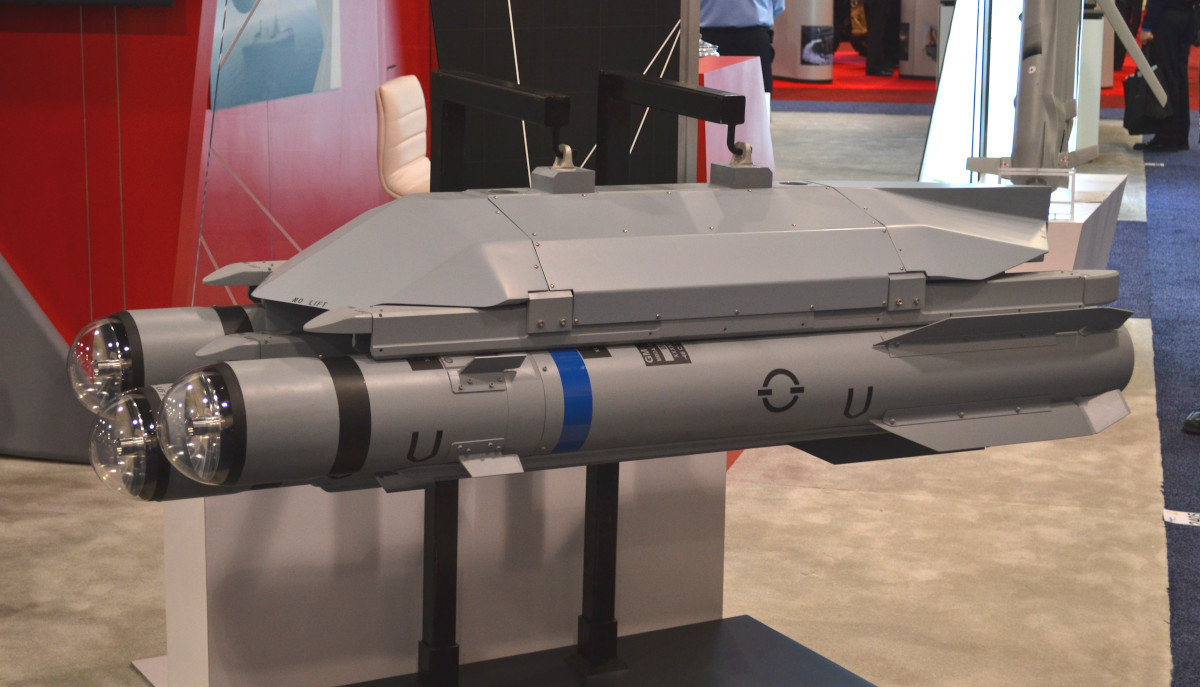
In addition, MBDA’s press release specifically notes the potential for export sales of Polish Brimstone-armed platforms in the future. The BWP-1 proposals could be especially attractive given that thousands of BMP-1s and various derivatives remain in service around the world. PGZ could offer to convert existing vehicles to any of the proposed configurations, presenting a lower-cost option for acquiring more modern anti-tank capabilities. A revival of the earlier palletized launcher concept, which could work with an even wider array of vehicles, could be popular for the same reasons.
All told, whether or not Poland picks a vehicle armed with Brimstone for its new tank destroyer, it is very possible that similar vehicles will appear in service elsewhere in the world in the coming years.
Contact the author: joe@thedrive.com
